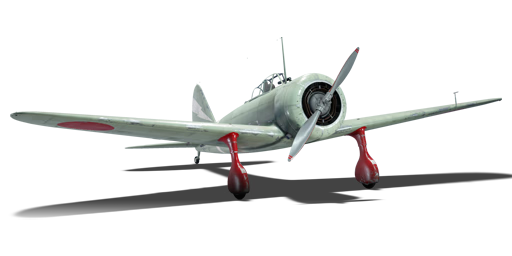




The Ki-27 otsu, designated as Type 97 Fighter (九七式戦闘機), was a monoplane fighter aircraft designed by Nakajima Aircraft Company for the Imperial Japanese Army Air Service in 1937. It was the Army's first monoplane fighter and had a low wing loading that gave it excellent manoeuvrability. The Ki-27 served as the main fighter of the Japanese Army until 1940, and participated in battles over China, Mongolia, Southeast Asia and the early stages of the Pacific War. It gained air superiority against Chinese and Soviet fighters, but was outperformed by newer Allied planes. The Ki-27 was also operated by Manchukuo, Thailand, and the Reformed Government of the Republic of China. A total of 3,368 Ki-27s were produced before production ceased in 1942, when it was replaced by the Ki-43 in frontline service and relegated to training and reserves.
It was introduced in Update 1.43. The Ki-27 distinguishes itself as a low-level dogfighter: its performance below 1,000 m is superb and it can manoeuvre away from nearly any other comparable fighter. Like the Ki-10 series before it, the Ki-27 otsu suffers from its poor armament (twin 7.7 mm Type 89s) and weak armour, which means it makes for a poor interceptor despite its high speed, but the Ki-27 makes an excellent escort for bombers and flying boats to provide cover for their allied bombers.
flaps
flaps
flaps
brake
control
| Belt | Belt filling | Armor penetration (mm) at a distance: | |||||
|---|---|---|---|---|---|---|---|
| 10 m | 100 m | 500 m | 1000 m | 1500 m | 2000 m | ||
| T/AP/IAI/AP/I | 13 | 12 | 7 | 3 | 2 | 0 | |
| T/AP/IAI/AP | 13 | 12 | 7 | 3 | 2 | 0 | |
| T/T/T/AP | 13 | 12 | 7 | 3 | 2 | 0 | |
| I/AP/AP/AP/IAI | 13 | 12 | 7 | 3 | 2 | 0 | |












Flight performance | |
|---|---|
Survivability |
|---|
Weaponry |
|---|